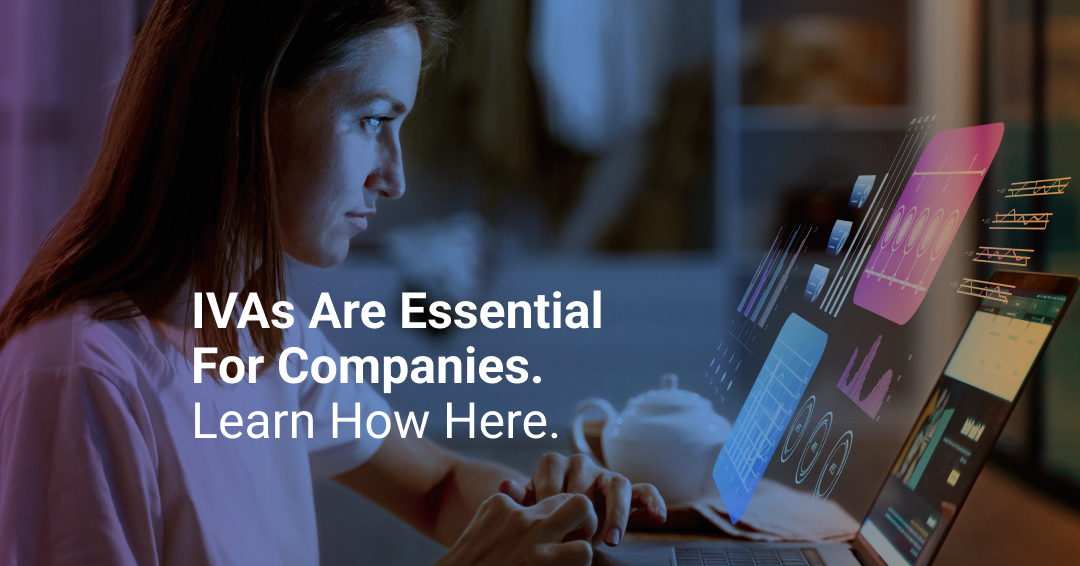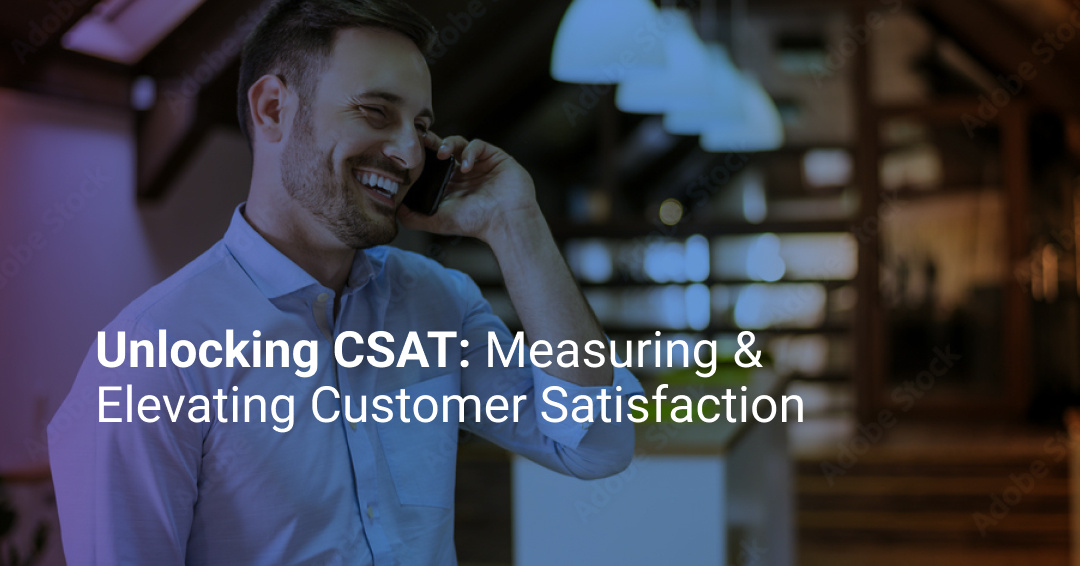12 Call Center Metrics You Should Be Using to Improve CX in 2025
Call center metrics are the most important performance indicators that monitor how effectively your call center is running. This includes anything...
7 min read
![]() Mosaicx
:
July 29, 2024
Mosaicx
:
July 29, 2024

Contact centers are drastically changing with the addition of intelligent virtual assistants (IVA) empowered by artificial AI technologies. While multiple agents had to be ready to handle customer interactions a couple of decades ago, leading to hold times and frustration, today, most organizations have moved towards a more automated CX experience.
But what exactly are IVAs, and why are they changing the contact center landscape?
The term IVA refers to intelligent virtual assistants or agents, as they are used interchangeably in the industry. Contact centers use this technology to improve customer experience and profitability. By incorporating artificial intelligence (AI), machine learning, and, in some cases, generative AI, IVAs can understand customers' intent and provide answers.
IVAs are also very important in the contact center industry as they are an option to empower users to go through a self-service support experience for some of their most common needs.
While many providers can adapt how IVAs work in their products, IVAs are programs that use artificial intelligence technologies to simulate human conversation by following this process.

As you can imagine, the use cases for IVAs are infinite. Currently, they are commonly used in customer service across multiple industries, such as education, healthcare, and entertainment.
When we think about the difference between chatbots and IVAs, we must consider technologies that are alike at first sight but foundationally different in complexity and innovation. Chatbots automate customer service via text in an online interface. Most of us have experienced or interacted with a chatbot. Sometimes they help. Many times, they create unhelpful, negative experiences.
AI virtual assistants, like Mosaicx,, are more advanced because they do not work by having a locked and limited set of answers to FAQs. Instead, they integrate generative technologies and contextual information to improve the quality of responses. The better the response, the more likely you are to have a good experience and ultimately get the answers you need without being redirected to a human agent.

While the benefits of IVAs are extensive, we will discuss some of the most important ones most contact centers can quickly experience when integrating this technology.
Unlike the reliance on human agents, IVAs are a technology that can always assist. It's essential to remember that human supervision is required even though you can have round-the-clock support with IVAs. On top of that, for more complicated queries, it is vital to have human-assisted service options that help your customers successfully solve their problems.
If you have been in the contact center industry for a while, you may have noticed agents perform multiple repetitive tasks that take a lot of time. IVAs are the perfect solution for these processes, from standardizing and automating answers to common queries and transactions to guiding customers through standard procedures. On top of that, there are advanced IVA options that also work in tandem with human agents to help them better track customers and meet their goals.
Unlike previous technologies that only had a single journey and decision tree available for all users despite who they were, IVAs are context-aware and adapt according to each customer. With advanced AI technologies, including machine learning and generative AI, IVAs have conversations with your customers that emulate a human conversation and help them solve their problems. While not all issues will be solved by an IVA, having a technology partner who tries to understand what you say is much better than a long hold time or asking people to call during business hours.
Contact centers across the world prioritize customer retention and positive engagement. With IVAs, retention metrics improve because customers receive prompt answers to most of their problems. At the same time, this leads to more engaging interactions with brands, better call resolution metrics, and happier and more efficient human agents focusing on more complex scenarios.
Integrating IVAs has significant advantages when it comes to cost vs. opportunity. While the initial integration fee might seem daunting with most providers, the benefits and savings you get from having your team focus on more complex interactions are evident very quickly. With an IVA, you maintain excellent service and solve problems quickly and, in some cases, more efficiently, all while freeing up time for your agents to do less repetitive work. On top of that, IVAs help you serve a higher volume of calls and interactions without depending on increasing the number of employees per account. For most contact centers, adopting IVA technologies is just part of the industry's natural evolution.
IVAs are a technology that works more efficiently when integrated with other systems within a contact center. IVAs need data to continue learning permanently, meaning they must be integrated with other systems to improve their capacity. Moreover, they aim to simplify mass volumes of interactions while accurately reporting updates on each account. That means they can't act or operate independently. Instead, they must be part of the contact center's tech stack. This integration allows them to handle data efficiently, automate reports and analysis, and improve overall contact center operations.
Working as a contact center agent requires grit, patience, and determination to face unknown scenarios and customers in all types of emotional states. With an IVA, agents can reduce their workload, switching from responding to every request to only handling requests requiring a more nuanced approach. As a result, your workforce can focus on increasing the quality and finesse of each interaction rather than competing on volume.
Contact centers can integrate IVAs in multiple ways to accomplish their goals. Below are the top use cases we have found and some examples of how call centers are using IVAs to improve their operations and better serve their customers.
This is intuitively an excellent fit for IVAs because it allows contact centers to handle larger requests without redirecting most calls to agents. IVAs empower customers to get the answers they need without having to talk to an agent or go through hold times to solve their problems.
Customer Support Real-World Example
Lemonade Insurance: AI Jim, their official company bot, has helped multiple customers file their claims and get satisfactory responses faster than most other options in the industry. This IVA automatically helps customers with their insurance processes by using fraud algorithms.
In the healthcare industry, IVAs can be very helpful for both patients and organizations. For example, with a robust integration with multiple data systems, IVAs can become powerful assistants that remind users to take their medicine, attend their appointments, or even help them prepare for surgery.
Healthcare Industry Real-World Example
Mayo Clinic has developed an AI chatbot tool to help doctors find patient information faster. With this integration, Mayo Clinic expects to help doctors reduce the cognitive load of handling vast clinical history tasks while maintaining service quality.
Managing personnel at scale is an operational challenge. With IVAs, human resource departments can simplify processes that would otherwise take a lot of time, such as onboarding, training, benefits enrollment, and other administrative tasks. Employees can directly interact with IVA tools to provide and update all of this information by themselves.
Human Resource Management Real-World Example
Unilever developed an IVA tool that combines AI with HR best practices to help new team members enroll themselves after accepting an offer. This IVA guides employees through their onboarding, best practices and policies, and enrollments, and it also helps HR with permanent training sessions and quizzes. As a result, the administrative burden on their HR department is reduced while assisting them to move faster regarding employee onboarding.
The retail industry has a large volume of information, making it ideal for IVAs. Among the aspects that can be improved with intelligent virtual assistants, three parts of the user experience journey jump out: presale, sale management, and customer service/feedback. Given the amount of data available in the presale, IVAs can provide recommendations to customers that lead to more sales. During the sales management, customers can track their packages and inform brands of delays and other issues. Finally, during the feedback stage, retail brands can gather even more information to understand better what went well and what can be improved in future customer interactions.
Retail Real World Example
Nike is an iconic brand that has used IVAs for years to ensure their entire brand experience is amplified and memorable. They run multiple satisfaction surveys to capture customer feedback, categorize and organize that information to nurture their product teams to develop new concepts, and even help their customers solve numerous problems without speaking to an agent. All of it while capturing valuable information and insights for the organization.
Filing claims is a time consuming process not only for the person filing it, but also for the company that needs to capture, qualify and organize the claim. In this particular industry, IVAs usually act as an intermediary between human agents and customers, helping organizations capture information automatically through multiple channels to facilitate claims processing. The result, agents focus on less repetitive and more intellectually demanding tasks, while IVAs handle the common paperwork duties required to help customers.
Insurance Real World Example
Geico, the gecko-friendly insurance company has developed a mobile virtual assistant to help their customers with insurance questions and processes. The app helps customers with information regarding policy coverages, billing info, finding documents and many other FAQs.
IVAs are commonly used in the IT and tech support industries as they easily integrate with techstacks and help teams reduce workloads. The line between IVAs and actual IT companies is blurry in this industry, as many services and developments are inherently close to advanced technologies like AI and machine learning. However, the implementation of IVAs, especially in IT support, stands out as it helps organizations provide top-notch support without increasing the number of agents at contact centers.
IT and Tech Support Real World Example
LogMeIn uses an IVA to monitor systems performance and proactively inform IT staff about potential problems. This is done by permanently analyzing metrics and signals, finding strange patterns, and coming up with potential solutions in real-time. By doing so, the technical team can prevent errors from happening, reducing potential downtimes and ensuring operational excellence at all times.
Marketing and sales departments can use IVAs to help their workforce run marketing campaigns, improve and automate lead qualification, collect information, and proactively reach out to customers. Just like the IT and tech support category, many of the products in marketing and sales are, in essence, IVA programs that help teams improve their processes and reduce manual repetitive tasks.
Marketing and Sales Department Real-World Example
Optimizely uses an IVA system to automate A/B testing processes at scales. This solution helps marketing and sales teams set up, monitor, and analyze multiple tests in parallel to find the most successful ones. These patterns and insights can improve campaign performance, key metrics, and financial objectives. Their IVA implementation becomes a decision-making partner for leaders in this field.
The evolution of virtual assistants is far from complete. As we look towards 2024, emerging trends point to a future where these agents are even more powerful, capable, and human-like. Integrating voice-activated technology, enhanced emotional intelligence, multilingual support, AR/VR capabilities, and predictive analytics in virtual agents is expected to create more engaging, interactive, and intuitive customer experiences.
At Mosaicx, we are dedicated to assisting businesses on their journey towards integrating these next-generation virtual agents. We provide insights, guidance, and solutions informed by the latest developments in AI and customer service technology.
To learn more about how our virtual agents can transform your business, please request a demo. We are ready to assist you and ensure that every interaction matters for your business.

Call center metrics are the most important performance indicators that monitor how effectively your call center is running. This includes anything...

Businesses across industries have changed or evolved over the decades, but one thing that has remained the same is that their growth is pretty much...

Customers have several major expectations from modern businesses, but none is as challenging as them reading your mind to anticipate support you...